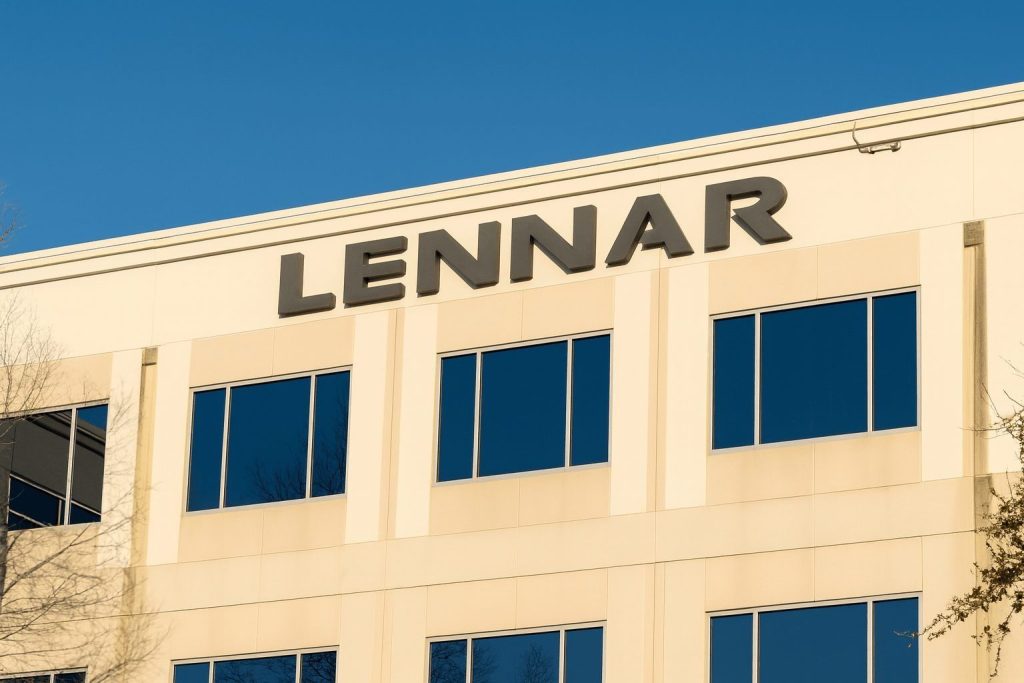Pfizer Inc. (NYSE: PFE) spent Wednesday trading slightly lower despite a stream of fresh headlines that cut both ways for sentiment. The stock hovered around $25.7, giving back a fraction of Tuesday’s nearly 2% gain, as investors weighed upbeat news on obesity drugs, cancer treatment and vaccines against ongoing legal and regulatory risks. [1]
Below is a structured look at how Pfizer stock is trading today, and the key news from November 26, 2025 that’s shaping the story.
PFE stock price today: small dip after a recent rebound
- As of late-morning trading on Wednesday, Pfizer shares were around $25.70, down roughly 0.1%–0.2% on the day. [2]
- The stock sits in the upper half of its 52‑week range of about $20.92 to $27.69, leaving Pfizer with a market value in the mid‑$140 billion area. [3]
- After a rough 2023–2024, PFE is now modestly positive year to date (around 3–4%), still lagging the broader S&P 500 but well above its lows. TechStock²
Income‑focused investors continue to zero in on Pfizer’s dividend:
- The company pays a quarterly dividend of $0.43 per share (annualized $1.72), which at current prices works out to a yield near 6.7%.
- The ex‑dividend date was November 7 and the next payment is scheduled for December 1, 2025. [4]
From a valuation standpoint, analysts generally see mid‑single‑digit percentage upside in the base case:
- The MarketBeat consensus rating sits at “Hold” with an average 12‑month price target around $28.4, roughly 10% above today’s price. [5]
- Separately, StockAnalysis data often cited in today’s commentary pegs Pfizer’s fair value near $29 per share, implying mid‑teens upside if long‑term assumptions play out. TechStock²
Fresh November 26 headlines: earnings upgrade, big investor buying and a neutral call
Several brand‑new notes and articles dated November 26, 2025 are in focus for PFE today.
Zacks Research lifts its 2025 earnings forecast
A MarketBeat summary of a new Zacks Research note reports that:
- Zacks analysts raised their FY2025 earnings-per-share estimate for Pfizer from $3.10 to $3.15.
- That updated estimate matches the very top of Pfizer’s own 2025 adjusted EPS guidance range and sits well above the current Wall Street consensus of $2.95 per share. [6]
This doesn’t radically change the story, but it reinforces the idea that at least some analysts believe consensus expectations are too low if Pfizer executes on its cost‑cutting and new‑product ramp‑up plans.
Thornburg Investment Management quietly boosts its stake
A separate MarketBeat report today highlights new 13F data showing that Thornburg Investment Management:
- Increased its Pfizer stake by 5.7% in Q2, buying about 562,800 shares.
- Now holds roughly 10.46 million shares, valued around $253.5 million,
- Making Pfizer Thornburg’s 7th‑largest position and about 3.3% of its overall portfolio. [7]
Institutional accumulation like this doesn’t guarantee a higher share price, but it does signal that some long‑term managers see value in Pfizer at mid‑$20s levels.
Berenberg reiterates a neutral stance
Not everyone is pounding the table. In a short note published early Wednesday, Berenberg:
- Reaffirmed its “Neutral” rating on Pfizer.
- Kept its price target at $25, almost exactly where the stock is trading. [8]
That call underlines a key divide on the Street: income and deep‑value investors are drawn to PFE’s high yield and low P/E, while more growth‑oriented analysts see the stock as fairly valued until obesity, oncology and vaccine bets translate into clearly accelerating earnings.
Metsera obesity acquisition: the big strategic bet front and center
Pfizer’s obesity strategy remains the centerpiece of almost every piece of PFE coverage this week.
On November 13, 2025, Pfizer closed its acquisition of Metsera, a fast‑growing obesity‑drug developer, in a deal valued at roughly $7–10 billion depending on milestones. Company disclosures and independent analyses say the structure includes an upfront cash payment plus contingent value rights that could take the total consideration as high as $86.25 per share. [9]
What Pfizer gets for that price:
- MET‑097i, an ultra‑long‑acting GLP‑1 receptor agonist being tested for weekly and once‑monthly injectable dosing in obesity. [10]
- MET‑233i, a monthly amylin analog that can be used alone or in combination with the GLP‑1, designed to further enhance weight loss and metabolic control. [11]
- At least two oral GLP‑1 candidates that are expected to enter clinical trials, positioning Pfizer for both injectable and pill‑based obesity treatments. [12]
Early data from Metsera’s lead GLP‑1 candidate have shown around 14% weight loss at 28 weeks with what the company says could be “class‑leading” tolerability — numbers that put it into the same conversation as today’s market leaders from Novo Nordisk and Eli Lilly. [13]
A Zacks commentary out today frames the Metsera deal as Pfizer’s ticket back into the booming obesity market, helping support an internal revenue CAGR target of roughly 6% from 2025 to 2030 if everything goes right. [14]
At the same time, a new article from The Motley Fool asks whether this move is a “checkmate” against Novo Nordisk, emphasizing that Metsera is still in mid‑stage development and faces intense competitive and regulatory risk. [15]
What it means for PFE today:
Metsera is a long‑dated growth option, not an immediate earnings driver. Investors appear to be pricing in some future obesity upside, but much of the value of this deal will hinge on:
- Phase 2 and Phase 3 data quality,
- Safety and tolerability vs. rival GLP‑1s,
- Commercial execution and pricing in a crowded market.
Cancer “win”: PADCEV + Keytruda approval boosts the oncology story
On November 21, 2025, Pfizer and partner Astellas announced that the U.S. FDA approved PADCEV® (enfortumab vedotin‑ejfv) plus Keytruda® as a perioperative treatment for adults with muscle‑invasive bladder cancer (MIBC) who cannot receive cisplatin chemotherapy. [16]
Key points from the pivotal EV‑303 / KEYNOTE‑905 trial and the label:
- It is the first and only regimen in this setting to show a significant survival benefit vs. surgery alone. [17]
- The combo produced about a 60% reduction in the risk of disease recurrence, progression or death and a 50% reduction in the risk of death compared with surgery alone. [18]
- Industry coverage from FiercePharma has described the approval as “game‑changing” and potentially a new standard of care for eligible MIBC patients. [19]
For Pfizer, which co‑develops Padcev and splits economics with Astellas, the approval:
- Adds another meaningful oncology revenue stream, and
- Strengthens the broader narrative that non‑COVID franchises — especially oncology — are now central to growth. [20]
Several valuation models referenced in today’s commentary (including Simply Wall St and StockAnalysis) suggest that incorporating stronger oncology expectations supports fair‑value estimates above current prices, though not by a huge margin. TechStock²+1
New legal headline today: Oxbryta wrongful‑death settlement
On November 26, 2025, legal news site DrugWatch reported that Pfizer has agreed to settle a wrongful‑death lawsuit over Oxbryta, a sickle‑cell disease drug that was withdrawn worldwide in 2024 following safety concerns. [21]
According to court filings summarized in the article:
- A Tennessee widow alleged that her husband died after taking Oxbryta for about two years, suffering worsening vaso‑occlusive crises and ultimately a fatal stroke.
- The lawsuit claimed Pfizer and Global Blood Therapeutics (Oxbryta’s original developer) failed to adequately warn patients and doctors about the drug’s risks.
- The parties reached a settlement in October 2025; financial terms were not disclosed. [22]
While one settlement is unlikely to move a company of Pfizer’s size on its own, it is noteworthy because:
- It is one of the first resolved wrongful‑death cases linked to Oxbryta.
- Lawyers expect more Oxbryta‑related claims, which keeps litigation risk on the radar for investors. [23]
This comes on top of other recent legal headlines, including a $41.5 million settlement with the state of Texas over alleged quality‑control failures involving the ADHD medicine Quillivant XR, where Pfizer denied wrongdoing but agreed to resolve claims that testing was manipulated to keep the drug on the market. [24]
Q3 2025 results and guidance: non‑COVID growth, higher EPS outlook
Today’s analyst updates are being interpreted through the lens of Pfizer’s third‑quarter 2025 results, released earlier this month.
According to the company’s official earnings release:
- Q3 2025 revenue came in at about $16.7 billion, down 6–7% year over year on an operational basis.
- The non‑COVID portfolio grew about 4% operationally, driven by oncology, non‑COVID vaccines and specialty products. [25]
- Reported EPS was $0.62, while adjusted EPS was $0.87. [26]
More importantly for today’s discussion, management:
- Reaffirmed 2025 revenue guidance of $61–64 billion.
- Raised and narrowed adjusted EPS guidance to $3.00–$3.15, up from $2.90–$3.10 previously. [27]
- Said it is on track to deliver about $7.2 billion in net cost savings by the end of 2027 through ongoing efficiency initiatives. [28]
That guidance backdrop helps explain why Zacks felt comfortable nudging its 2025 EPS estimate up to $3.15 — effectively baking in the top end of Pfizer’s own range. [29]
Pipeline progress beyond obesity and oncology: Lyme vaccine update
Another new headline today concerns Pfizer’s vaccine pipeline.
Benzinga reported that partner Valneva SE released final Phase 2 immunogenicity and safety data for VLA15, a Lyme disease vaccine candidate co‑developed with Pfizer. [30]
Highlights from the study:
- Six months after a booster dose (month 48), participants across all age groups showed a strong immune “memory” response and a favorable safety profile.
- Data support a regimen built around a three‑dose primary series plus yearly boosters, which has been incorporated into Phase 3 protocols.
- Assuming positive Phase 3 outcomes, Pfizer aims to file for U.S. and EU approvals in 2026 (Biologics License Application to the FDA and Marketing Authorization Application to the EMA). [31]
For investors, this is another sign that Pfizer’s vaccine franchise is not just about COVID and could generate incremental medium‑term revenue in newer indications like Lyme disease.
Derivatives and sentiment: options and macro drivers
Derivatives data and market commentary today paint a picture of measured, not frantic, interest in PFE:
- OptionCharts data (echoed in today’s media coverage) show implied volatility around 25% for PFE options and an IV rank in the high‑teens, suggesting volatility is only slightly elevated vs. the past year. [32]
- Recent reports highlight large option structures centered around the $25 strike, with traders buying both calls and puts for near‑term expiries — a sign that some “big money” is positioning for a move away from the current range, rather than a strong directional bet. TechStock²
Macro and sector context matters as well:
- The GLP‑1 obesity space continues to heat up, with Novo Nordisk just announcing impressive mid‑stage data on its next‑generation drug amycretin, once again reminding investors of how fierce obesity competition will be. [33]
- At the same time, high U.S. interest rates and ongoing pricing pressures (including looming Medicare price cuts for several drugs) create a tough environment for big pharma valuations more broadly. [34]
What today’s mix of news means for Pfizer stock
Putting it all together, November 26, 2025 leaves Pfizer looking like a classic “transition story”:
Positives investors are focusing on:
- Metsera acquisition gives Pfizer a credible shot at the next wave of obesity drugs, potentially transforming its Internal Medicine business later in the decade. [35]
- PADCEV + Keytruda approval strengthens Pfizer’s oncology franchise and may open a sizable new revenue stream in bladder cancer. [36]
- Q3 results and guidance show non‑COVID growth, disciplined cost‑cutting and a willingness to return cash via a robust dividend. [37]
- Today’s Zacks EPS upgrade and Thornburg’s increased stake suggest that some professional investors see upside from here. [38]
Key risks and headwinds still front of mind:
- A significant patent cliff between 2026 and 2028 could pressure revenues if new launches disappoint. TechStock²
- Ongoing legal and regulatory exposure, from Oxbryta wrongful‑death cases to the Quillivant XR settlement, underlines the ever‑present litigation risk in big pharma. [39]
- Obesity and oncology bets carry clinical, competitive and pricing risk, and their cash flows are several years out even in success scenarios. [40]
- At least one major bank (Berenberg) still sees the stock as fairly valued, with a neutral rating and a $25 target price. [41]
For now, the market’s verdict today is muted: a tiny share‑price dip, even in the face of both positive and negative news, suggests investors are waiting for more proof that Pfizer can fully replace fading COVID revenue and navigate its patent expirations.
As always, anyone considering PFE should weigh:
- Their risk tolerance,
- The role of a high‑yield, large‑cap pharma stock in a diversified portfolio, and
- The time horizon needed for obesity, oncology and vaccine bets to play out.
This article is for information and news purposes only and is not investment advice.
References
1. www.marketscreener.com, 2. www.marketscreener.com, 3. www.marketscreener.com, 4. www.marketbeat.com, 5. www.marketbeat.com, 6. www.marketbeat.com, 7. www.marketbeat.com, 8. www.marketscreener.com, 9. www.pfizer.com, 10. www.pfizer.com, 11. www.pfizer.com, 12. www.pfizer.com, 13. www.fiercebiotech.com, 14. www.nasdaq.com, 15. www.fool.com, 16. www.pfizer.com, 17. www.pfizer.com, 18. www.pfizer.com, 19. www.fiercepharma.com, 20. www.nasdaq.com, 21. www.drugwatch.com, 22. www.drugwatch.com, 23. www.drugwatch.com, 24. www.reuters.com, 25. www.businesswire.com, 26. www.businesswire.com, 27. www.businesswire.com, 28. www.businesswire.com, 29. www.marketbeat.com, 30. www.benzinga.com, 31. www.benzinga.com, 32. optioncharts.io, 33. www.reuters.com, 34. www.benzinga.com, 35. www.pfizer.com, 36. www.pfizer.com, 37. www.businesswire.com, 38. www.marketbeat.com, 39. www.drugwatch.com, 40. www.statnews.com, 41. www.marketscreener.com







